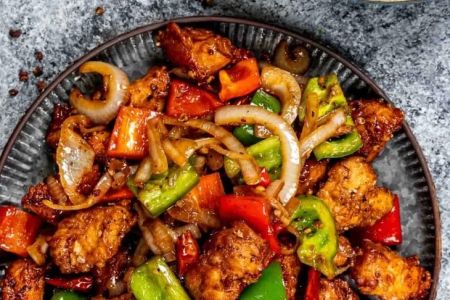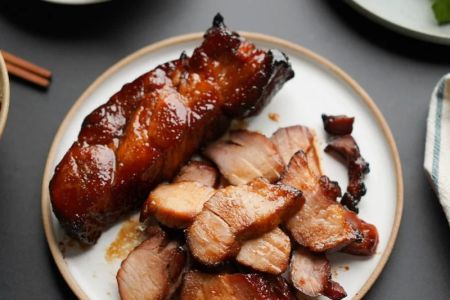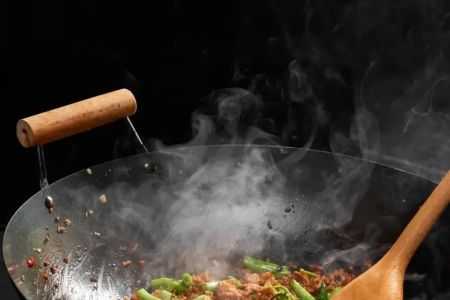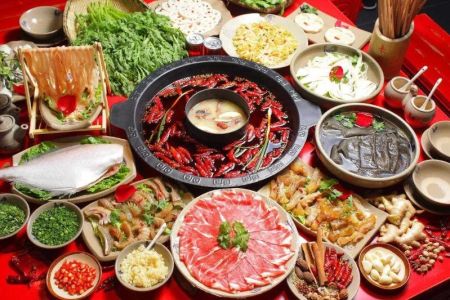How Do Chinese Restaurants Cook Their Vegetables?
When you think of Chinese food, the vibrant, perfectly cooked vegetables often come to mind—those crisp, colorful stir-fries with just the right amount of sauce. But have you ever wondered how Chinese restaurants achieve this? As someone who loves to cook and frequently enjoys Chinese cuisine, I've always been curious about the techniques used to prepare vegetables in these dishes. After researching and experimenting with various methods, I’ve discovered some key principles that define how Chinese chefs cook vegetables to perfection.
1. The Art of Stir-Frying Vegetables
One of the most popular cooking techniques in Chinese restaurants is stir-frying. This fast-paced method ensures that vegetables retain their natural flavor, texture, and nutrients while developing that delicious charred aroma. The key to a successful stir-fry lies in the high heat and quick cooking time, which helps vegetables cook evenly and maintain their vibrant color.
Chinese chefs use a wok, a traditional round-bottomed cooking vessel, which distributes heat efficiently. The wok allows for rapid cooking, while tossing the vegetables ensures that they cook evenly. When stir-frying vegetables, the process typically involves adding oil to the hot wok, followed by the vegetables and a quick stir to coat them in the oil. This method helps vegetables stay crisp, making them a great addition to stir-fry dishes like broccoli with garlic or mixed vegetables in a savory sauce.
2. Blanching for Perfect Vegetables
Another common method used by Chinese restaurants is blanching. This technique involves briefly immersing vegetables in boiling water, then quickly transferring them to ice water to stop the cooking process. Blanching is often used for vegetables like bok choy, Chinese broccoli, and spinach, ensuring that they retain their vibrant color and firm texture without becoming overcooked.
Blanching is essential when preparing vegetables for dishes like hot pots or soups, where the vegetables need to maintain their freshness and crunch. By blanching vegetables, Chinese chefs can enhance the dish’s texture while preserving their natural flavors, making it a great option for both vegetarians and meat-lovers alike.
3. Steaming for Tender and Nutritious Vegetables
Steaming is another crucial technique used in Chinese cooking, especially for more delicate vegetables like cabbage, carrots, and mushrooms. Unlike other cooking methods, steaming helps preserve the nutrients and natural flavors of the vegetables without requiring additional oil or fats. The result is tender, light vegetables that can be served on their own or as part of larger dishes like dim sum or stir-fried rice.
In Chinese restaurants, vegetables are often placed in bamboo steamers, which allow them to cook evenly. Steaming is especially popular for cooking vegetables in dim sum or as side dishes for main courses. Since steaming doesn’t require heavy seasoning, it allows the natural sweetness of the vegetables to shine through, making them a perfect complement to any meal.
4. The Importance of Sauces in Chinese Vegetable Dishes
While the cooking technique itself is important, the sauces used in Chinese restaurants are just as essential to the flavor of the dish. Chinese chefs often create a variety of sauces that enhance the taste of vegetables, from light soy sauce to heavier oyster sauce or hoisin sauce. These sauces add umami, depth, and richness to the vegetables, elevating the overall dish.
For example, in dishes like stir-fried mushrooms with soy sauce, the sauce coats the vegetables, infusing them with a savory flavor that perfectly balances the natural sweetness of the mushrooms. Other sauces, like garlic sauce or black bean sauce, are used to create bold, aromatic dishes that feature vegetables like Chinese eggplant, snap peas, or Chinese cabbage. The combination of fresh vegetables and flavorful sauces is what makes Chinese vegetable dishes so delicious.
5. Cooking Vegetables with Meat for Enhanced Flavor
In many Chinese restaurants, vegetables are often paired with meat or tofu to add richness and variety to the dish. For example, vegetables like bell peppers, onions, and carrots are commonly stir-fried with beef, chicken, or pork. The meat not only contributes to the overall flavor but also enhances the texture of the vegetables, allowing the dish to have both crunchy and tender elements.
Chinese chefs often marinate the meat in advance, using a blend of soy sauce, ginger, garlic, and other seasonings. This marinated meat then imparts its flavor into the vegetables during the cooking process, creating a harmonious balance between the protein and vegetables. Dishes like kung pao chicken with peanuts and vegetables or stir-fried beef with broccoli are prime examples of how vegetables can be paired with meat to create a well-rounded and flavorful meal.
6. The Role of Spices and Aromatics in Chinese Vegetable Dishes
Chinese restaurants also use a variety of spices and aromatics to complement the flavor of vegetables. Fresh garlic, ginger, chili peppers, and scallions are frequently used to infuse the vegetables with a complex, aromatic flavor. In some dishes, the vegetables are sautéed in a mix of oil, garlic, and ginger before being stir-fried or steamed. These aromatics are key to developing the deep, bold flavors that define Chinese cuisine.
For example, a dish like Chinese stir-fried green beans with garlic and chili is made by tossing the vegetables in hot oil with fresh garlic, ginger, and chili peppers. This cooking method imparts an irresistible depth of flavor, while the chili peppers add a touch of heat to balance the dish. The combination of spices and aromatics in Chinese cooking is what makes vegetable dishes so full of life and complexity.






![Top Chinese Restaurants for Authentic Cantonese Cuisine in [Your City]](https://img.gochinarose.com/d33/2507/4157910400_450x300.webp)
